|
A Day at Electric Forest Story and photos by Mark Pitzer Electric Forest! The annual youth dominated event that annually engulfs the Rothbury area is often the subject of conversation around these parts as well as a source of consternation among those who are affected by the voluminous traffic that often accompanies the happening. Our friend Mark Pitzer had the opportunity to get a close up view of the Double J doings and we asked him to contribute his take on this year’s version. An incredible number of young people have paid to experience the Electric Forest Festival in rural Oceana County this weekend.The massive influx of people is both well planned and highly congested. The operators of the Double J Ranch work miracles with festival planners, state and local authorities to control the impact of 45,000 plus visitors. Festival participants enjoy camping, concerts and displaying a wide variety of colorful costumes in a highly developed artistic environment. Months of planning with years of experience have paid great dividends for festival goers. Campers fill a multitude of fields with cars,colorful tents and banners in tightly organized areas with porta-johns and essential services available. The real draw is the very colorful music festival with five stages and circus tents with the never to be forgotten Electric Forest area hosting an incredible array of artwork, magnificent lighting and people watching.
This is a highly visual experience and concert festival for younger members of the "alternative culture". High regard is bestowed for unusual costumes and body art. It was an alien experience I will always remember and cherish. Why White Cloud and Hesperia can’t afford the Dams By Charles Chandler and Mark Heying The “Forgotten River” series has received a lot of local interest and produced many interesting comments and observations. The first in the series was a celebration of the work of a local group of kayakers in opening up the White River by clearing a narrow path in the waters from White Cloud to Hesperia. The second article addressed concerns about the legality, rules, and regulations involved in clearing that path, and how those legalities were complied with. The third article in the series centered on the history of the dams at White Cloud and Hesperia, and the serious, detrimental effect those dams have on the health of the rivers’ fish. The original intention of the author was to limit these articles on the forgotten White River to these three; however, due to the complexity of the topic and to the impressive response that these articles have generated, we’d like to expand on the subject, with detailed discussions on the economic potential of our river, and how that potential is currently being wasted. We would also, with the permission of our kind readers, like to address some of the many rumors and misinformed opinions that have been expressed not just lately but in some cases, over the last several decades. In the coming articles please consider local economic development. And specifically, the value of recreation because one of the economic strengths of our state and the central western Michigan area is the generous recreational opportunities that abound within. In our state, 63% of Michigan residents participate in outdoor recreation. More than twice as many jobs in Michigan depend on outdoor recreation (232,000) than on the aerospace industry (105,000). Michigan residents are more likely to participate in kayaking and camping than the average American. But as popular as kayaking and camping are, they are not the most popular activity. Fishing is. In Hesperia and White Cloud and along the White River the recreational kayaking and fishing potential exists but is not developed and the economic benefits are lost. A comparison between the White River and the nearby Pere Marquette can reveal the scale of that lost opportunity. Both the White River and the Pere Marquette River begin life in the same general area of Michigan. They are only about 30 miles apart, are similar in size, and both end their flow into Lake Michigan. And that’s where the similarities largely end. The Pere Marquette is a world-class fishery. It is an international fishing destination and an economic powerhouse for the area. The White River, on the other hand, is not well known and is largely ignored. The Pere Marquette River receives a healthy flow of salmon and steelhead each fall. It is Michigan's longest dam-free river and has a wild and scenic beauty that's unmatched. It also flows through millions of acres of public land, which makes finding a spot to fish pretty simple. The longest undammed trout stream in Michigan—and one of the first in America to be stocked with brown trout—the mainstream of the PM stretches for more than 60 miles from Baldwin to Pere Marquette Lake. Much of it is designated as a National Scenic River. The first 10.5 mile stretch downstream from Baldwin (M-37) to Gleason’s Landing is flies-only, catch-and-release, the water is good for wading, and boasts great salmon and steelhead runs, too. Travel north on M 37, and you’ll soon see the economic activity generated by the fishermen of the Pere Marquette. You’ll see the roadside signs, the motels, guide services, sports shops, boat yards, and banners. In Baldwin, you’ll see the fish art on the lamp posts. One of their biggest city events is the annual Troutarama. In the City Park, you’ll find an incredibly beautiful 12-foot statue of a brown trout. While you’re there, stop at the Barsky Restaurant, and have lunch. Talk to the manager. She’ll tell you that about 75% of their business is driven by Pere Marquette fishermen. The salmon fishermen account for about 50% of that, the steelheaders about 25%, as do the trout fishermen. The gross annual income of Barsky’s is about $250,000 and they have four full-time staff, about 13 part-timers, and will add three or four more during peak salmon season. When asked what would happen if the salmon and steelhead disappeared from the Pere Marquette, the manager said that “we would lose probably 30 to 40% of our business and eventuality go out of business.” Their lunch is delicious. Stop at the Government Lake Restaurant, and talk to the people there They’re nice, friendly folks. One member of management recently said that most of their business was driven by Pere Marquette fishermen. Their gross annual income is about a half million dollars, and the value of the business was estimated to be about half a million as well. There are about 22 part-time staff, and additional help are added in the evenings and during peak fishing season. Go into the StealthCraft dealership in Baldwin. Do a little boat shopping, pet the championship dog there, and talk to the management. They’ll tell you that 70 to 80% of boat sales there are national, and 20 to 30% of sales are local. Gross annual income is about six million dollars, and the valuation of the business is about 10 million dollars. There are about 35 employees at the boat manufacturing facility and dealership. The dealership also owns a lodge, which employs two to three guides, and various housekeepers during the peak season. Ask them how important the Pere Marquette is to their business. They say that “if the salmon, steelhead, and trout were not in the Pere Marquette, we would not be here.” Next, head on down to the PM Orvis Lodge. It’s a nice place. Talk to management. They’ll tell you that most of their income is provided by salmon, steelhead, and trout fishermen. They had five full-time employees and 3 part-timers. They’ve added more shop and housekeeping hours during peak fishing season. “If the salmon, steelhead, and trout were not in the river our business would be dramatically different”, they said. Take a drive over to the Baldwin Bait and Tackle shop. A member of management says that about 60% of their annual business was driven by salmon, steelhead and trout fishing. Their gross annual income is in the $500,000 range and the valuation of the business is probably around one million. They have five full-time employees and four part-time and did add additional staff during peak fishing season. They also increase their tackle inventory during salmon and steelhead season. Go and do a little fishing while you’re there. Talk to the livery service. They’ll take your truck down the river for you; it’ll be waiting at the end of your float. The livery operator will tell you that 100% of his business is driven by salmon, steelhead and trout fishermen. His annual gross income ranges from $20,000 to $50,000. He has one full-time employee and two part-time. He operates his business year-round and if it were not for salmon, steelhead and trout in the river he would not have a business.
Talk to the people at the Pere Marquette Canoe and Kayak livery, or the lodges like the Westinghouse, or Brophy’s, or the Pere Marquette River Rod and Gun Club. They’ll all tell you very similar stories. Visit a local professional fishing guide. According to the folks at the Huron-Manistee National Forest Baldwin Ranger station, there are around 32 licensed guides working the Pere Marquette river. Most charge around $400.00 for an 8-hour day trip. This works out to a $50.00 an hour job, which is comparable to what a dentist, pharmacist, lawyer, judge, technical manager, and other business managers tend to make. The outfitters and lodge managers around Baldwin estimate that during peak salmon, steel and trout season there are on about 20 guides a day working the river, creating around $8000 a day in revenue, which that cascades throughout the area. Top guides do about 150 trips a year, which comes to around $60,000. Simple math tells us that, in total, these guides generate $1,200,000 a year in revenue. Add in tips, booking fees, miscellaneous rental equipment like kayaks and canoes, and retail sales. At North West Realty the staff said a prospective buyer will pay about a $50,000 premium when buying property along the Pere Marquette river. This value is driven by the reputation of the Pere Marquette (location, location, location) and the status that comes with having a property along this famous river. If you fish or kayak on the Pere Marquette or if you’re visiting these successful businesses, these guide shops, restaurants, equipment stores, lodges, motels, and campgrounds, for a conversation starter ask them if they would support a couple of dams being built on the Pere Marquette River. Maybe one below Baldwin, where it will stop the fish from moving upstream; like the dam, they have in Hesperia. Ask them if a second dam should be put in, above Baldwin, where it will heat the water until it is a detriment to the fish; like the one they have in White Cloud. Ask them if they should throw away their incredibly valuable resource and beautiful river or trade it for two old dams and two small shallow pounds. They’ll probably look at you as though you’ve gone insane. An unlikely conversation yet still an accurate comparison of two rivers about 30 miles apart. One a nationally known river and an economic driver for the community and the other forgotten, undeveloped and a monument to a bygone era. In the next article, we will dive deeper into the economic and ethical reasons that Hesperia and White Cloud should trade in their dams for a different future.  Jordan Sall, DO Jordan Sall, DO For one doctor, serving this community is part of Gerber Memorial’s commitment to provide a wide range of care close to home By Jordan Sall, DO, Spectrum Health Gerber Memorial Serving as a healthcare provider in Newaygo County is a rewarding experience for me and my colleagues at Spectrum Health Gerber Memorial. When GR Magazine released its list of Top Doctors in West Michigan, I took a moment to pause from my daily duties to reflect on this honor. I took time to think about the privilege and blessing of being able to provide care to the families of this wonderful community. To be honest, I was pleasantly surprised to have made the list. Yet at the same time, I realized that whatever qualities I may bring to my job and my interactions with my patients are also the qualities I seek in my colleagues. Everyone from our front registration staff to the team in our kitchen to environmental services to nurses and lab techs comes in every day with only one thing in mind: Providing healthcare that is personalized, simple and exceptional for the folks who live and work here. Newaygo County is a special place. Full of rivers, lakes and trails, Newaygo County is an oasis where neighbors help each other, and the spirit of collaboration remains strong. They’re family members and childhood friends of the 690-plus people who work at Gerber Memorial. It is not an exaggeration to say that we really treat our patients like family, something Gerber Memorial has done since 1918. When I became Chief of Medicine and later Chief of Staff at Gerber Memorial, I was immediately excited to find myself in a setting where I could do and learn more as a doctor. At Gerber Memorial, I had the opportunity to practice a wider, broader scope of medicine. While my colleagues in larger communities (where I practiced previously) are focused on specialized medicine, doctors at places like Gerber Memorial have the privilege of doing the opposite: developing more knowledge in more areas of medicine and being more involved in the whole patient. Having worked in Grand Rapids, I’m also amazed every day at how Gerber Memorial strives constantly to deliver more services to attend to the needs of our patients. All with the goal of delivering care close to home. Gerber Memorial providers can now refer patients to a wide range of Spectrum Health specialists who are right here in Newaygo County, from urology to cardiology and gastroenterology. Cancer patients in Newaygo County and surrounding communities no longer have to drive to Grand Rapids for treatment because Gerber Memorial has a Cancer Center right here in Fremont. Like many rural communities, Newaygo County faces challenges when it comes to hiring doctors to work here – and rural communities need doctors, nurses, registered dietitians and therapists, among others, now more than ever. Newaygo County, as in many rural counties in Michigan, is working hard to rein in high rates of diabetes and tobacco use. Mental and behavioral illnesses are a growing challenge. I believe we are up to the challenge and those healthcare professionals who are here truly want to serve at Gerber Memorial. We are brainstorming and implementing solutions that we believe meet the needs of families in Newaygo County. Services like Momentum – unique to Gerber Memorial – pairs a patient’s primary care provider with relevant experts such as certified fitness specialists, dietitians and therapists to create a personalized medical fitness and health program to meet that patient’s specific needs. Momentum seeks to address what each patient needs, while potentially addressing clinical challenges such as readmission rates. Gerber Memorial has a registered nurse who is also a dedicated diabetes educator who can guide patients on a journey toward whole health and wellness. These are just some of the amazing things I see my colleagues do every day and offer to our patients and our community. Though Gerber Memorial may be “small” in size, we are doing big things to provide care close to home. And for each of us, it is a privilege to serve our patients. Editor's Note: Jordan Sall, DO, is a hospitalist at Spectrum Health Gerber Memorial. The June edition of GR Magazine listed Dr. Sall as a Top Doc in West Michigan based on recommendations of other physicians. Rebuttals to Reader Comments on The Forgotten River Article III
By Charles Chandler and Mark Heying The recent articles suggesting removing the old White River dams at Hesperia and White Cloud, have generated considerable interest, questions and comments on social media. Here are some of those questions, and the authors replies. These replies are based not on opinion, but on the facts, which are based on careful studies done by those experts who have dedicated their professional lives to learning the answers presented here. Facts matter. Question: There’s an old rumor, still going, that a nation-wide fishing organization put carp into White Cloud Pond, to drive out the trout and ruin the fishing. Is that true? Answer: No. Carp didn’t drive the trout out of White Cloud Pond. The water temperature did. Trout need clean, cold water in order to survive. They need cold water because they need a lot of oxygen. Cold water has a lot of oxygen, warm water has less, and very warm water has a lot less. White Cloud Pond is shallow, getting shallower, and warmer, with every passing year. There may be a few trout that drift into the Pond in the cold weather months, but they can’t survive there in the summer. Carp can. They need much less oxygen to survive. http://www.michigandnr.com/Publications/PDFS/IFR/ifrlibra/Special/Reports/sr52/SR52.pdf (see first paragraph page 40) https://www.usgs.gov/special-topic/water-science-school/science/dissolved-oxygen-and-water?qt-science_center_objects=0#qt-science_center_objects As an example, and regarding the comments about the fish populations in White Cloud Pond. On Monday June 3rd DNR agents began a typical fish sampling survey of the White Cloud Pond. They set a series of large and small mesh nets at various locations around the Pond. Passerby’s may have noticed the red buoys that marked the location of the sampling nets. The preliminary sampling report after 3 days of netting was “a few small bass, a few pike, one brown trout, one crappie, and one yellow perch. The most numerous fishes were white suckers, carp, and hybrid sunfish.” The sunfish were recently dumped in for the June 1st Kids Fish Free Day event. A Typical sample for an old shallow, warm and forgotten Pond. According to the DNR agents the full sampling report will be published in the Spring of 2020 and can be found on the DNR website. Question: Is it true that the Michigan DNR has been thinking about the re-introduction of Grayling into the White River? Answer: Yes. Years ago, Brown, Rainbow and Brook Trout were introduced to Michigan rivers. Before then, Grayling were the only native salmonids. They were, unfortunately, wiped out by logging and over-fishing, and have been gone from Michigan streams for 100 years. Now the Michigan DNR is considering re-introducing these incredible fish back into the White River. They will only live in waters that are cold year-round. Therefore, in the current state of the River, they would have to be put in above the White Cloud Dam. The Alaskan Grayling thrive in waters alongside five different kinds of salmon, rainbow trout, char, whitefish, and other predatory fish. Grayling populations are limited by the quality of water and supporting habitat they need to thrive in, and not by competition with other fish. https://www.migrayling.org/ This is a huge opportunity for the City of White Cloud. City residents should strongly encourage the re-introduction of these beautiful and remarkable native fish back into the White River. Question: Some people say that, if salmon and steelhead were allowed to go past Hesperia Dam, it would ruin the upstream trout fishing. Is that right? Answer: No. Trout, salmon, and steelhead can live together just fine. They have done so for thousands and thousands of years. They do in nearby Bigelow Creek. They do in nearby Pere Marquette River. And if allowed to, they’ll do just fine in the upper White River as well. The fact is that salmon and steelhead make a river healthier. Salmon generally enter our Michigan rivers around the end of August and begin spawning in September. As the females begin digging their redds (nesting beds) in the gravel they dislodge trout food, mayflies, stoneflies, caddis flies, and midge nymphs that are living in the streams, and the trout gobble them up. Then, as the females drop their eggs, the trout will eat as many as they can. These protein-packed eggs are like ribeye to the trout, and they fatten very quickly. After spawning the salmon die and their decaying bodies provide a rich supply of nutrients for other fish, crayfish and stream microorganisms. After they hatch, salmon and steelhead fry and fingerlings are eaten by the trout. Studies show that mink, otters, ospreys, kingfishers, great blue herons, pike, large predatory brown trout, fishermen and thermal pollution are far more detrimental to the resident trout population than migratory salmon or steelhead. In the case of the upper White River, (below White Cloud Dam), the high summer water temperature is the real killer when it comes to trout population. For a great video on a fly-fishing watch Frank Willitts Pere Marquette Lodge businessman and fishing guide. http://www.pmlodge.com/ Follow these two link to photos of salmon, steelhead, and trout, all caught in the same river. https://fishbaldwin.com/guided-trips-with-baldwin-bait-tackle/ Question If the Hesperia Dam is taken out, the lamprey will invade the upper White River. Is this true? Answer: Yes and No. If the entire structure was removed it would allow the lamprey access to the upper White. But there are other options rather than removing the entire dam. A short dam, 2 feet or so, will prevent lamprey from migrating upstream. The Homestead Dam on the Betsie River near Benzonia, MI was mostly removed in 1974 and currently acts as a lamprey barrier. It impounds little water and does not impede upstream salmon or steelhead migrations. http://www.glfc.org/pubs/FACT_5.pdf Question: People say that if the salmon and steelhead are allowed to go up past Hesperia Dam, the fisherman will stop showing up there, and Hesperia’s economy will suffer. Is that right? Answer: No. It’s exactly wrong. Take a trip to the above-mentioned Homestead Dam, and see for yourself. Or watch the following YouTube video. During the fishing season you’ll find the parking lots full of cars, from all over the country, and the river full of fishermen and women. And you’ll see something else; people coming just to see, and photograph, the fish as they fight their way up above and past the short dam. If Hesperia and White Cloud had a similar structure, fishermen and tourists from all over Michigan, and more, would find their way there to fish and watch. https://www.youtube.com/watch?v=jCRtCUgCt1M All comments to these articles regarding our Forgotten River are appreciated. Discussions involving change, especially about removing the two dams, is very controversial and should continue. Hopefully these discussions will become less emotional, and instead be based on facts, rather than misinformation and rumor. Watch Near North Now for upcoming articles discussing the year after year economic penalties that White Cloud and Hesperia are experiencing because of their two dams. You may gain a new perspective. The Bears of Newaygo County By Ken DeLaat Many thanks to photo sharers: Jodi Breuker Wilburn, Rob Benson, Emily Burrell, Beahany Acton, Krystalynn Cubitt, Marcy Wojciakowski Southwick, Sandy Taber Scherphorn, Diane Flaherty-Graff, Julie Berwald, Caitie Wilk, and others who contributed. The bears have always been with us. Years ago sightings would be spoken of over coffee at local eateries on occasion and close encounter stories might get shared after a few beers at one of the bars. Then came the advent of social media exposing us to a significantly wider community while technological advances delivered high quality phone cameras, trail cameras and such . Soon these bear glimpses began to be a sporadically erupting subject eventually evolving into more regular appearances. Now these past few months it seems we have suddenly been swept up by ursamania. Social media is filled with the adventures of the three pawed Momma with her cubs and lone bear sightings occuring in such widespread parts of the county seem to indicate its not just one or two amorous males with faulty homing mechanisms in search of dates for the season. Residents just a few miles away from N3 World Headquarters have experienced thickly coated bestial brunettes deck dancing, feeder frolicking and just plain making themselves at home. What does this proliferation of sightings mean? Are the bears looking to move here en masse to establish a strong political base in order to push forward their agenda? And what would that agenda be? Look, I know it depends on the individual bear and all but as a species can they really be trusted? In their recent annual ‘bear memo’ press release the DNR began by recognizing that West Michigan has an expanding bear population and that Newaygo County (yes, us) is now considered ‘bear country’ according to Wildlife Biologist Pete Kailing from the Paris Field Office. “Citizens will need to be aware of that and take a few precautions to avoid accidentally attracting bears.,” said Kailing. “The best way to avoid issues with black bears is to never feed them. A fed bear often becomes a dead bear.” Wow. So it sounds less like a political agenda than a hunger/food thing to me. I’ve known people over the years who I can imagine wandering into new territory if they were hungry enough. I recall one night attempting to get an acquaintance who had been visiting far too long to leave by not feeding him but he opened a new bag of chips he took right out of my cupboard without even a momentary consideration about asking. It was if he was caught up in an instinctual gathering phase with minimal forethought in play. Weird, I know, and truth be told so was he. But I digress. The DNR details some helpful tips for avoiding conflicts with bears around homes and camps and we add a bit of feedback because, well, because we find bears fascinating. Never intentionally feed bears. And if you need this advice the rest of this guide will likely elude you. Remove potential food sources, like bird feeders and bird suet, from your yard. Do not feed wild birds in the spring, summer and fall, when bears are most active. This one hurts for folks who love to keep tabs on their feathered friends year round but seriously if one only feeds in winter most years in this peninsular paradise winter can be close to being nearly year round anyway. Keep pet food inside or in a secured area. As well as small pets who might be protective of said food one imagines. Keep garbage and odor at a minimum by removing trash often and cleaning the can or other container used for garbage. Keep garbage in a secured area or in a secured container with a metal, lockable lid until it is picked up or taken away. “One man’s trash..” as the saying goes. I imagine after grubbing about for some roots and berries hitting an unprotected pail of what humans toss away food-wise is like cutting loose a ravenous group of teenage boys on an all you can eat buffet line. Keep grills and picnic tables clean. Have you ever camped near folks who didn’t do this in bear country? I have. It doesn’t make for easy sleeping. Bee hives (apiaries), fruit trees and gardens can be protected from bears by electric fencing. My hunch is the average bear (not Yogi who is said to be smarter than the average bear) doesn’t have the table manners of Pooh when it comes to honey. Bears have been described many ways but dainty has never been one I’ve seen used so in quest of honey the hive likely takes a bit of a beating. Make noise to scare bears out of your yard or around your home: but do not approach bears. I would definitely make noise...mostly a prepubescent scream while bolting in the direction of any port of safety. Good work DNR. This all looks like good advice to me but if I were to be totally honest? I really want to see one. I never went to the dump in the UP to see them like other kids talked about doing back in the day and never have bumped into one when enjoying our peninsular partner to the north. So yeah, I want to see one. And when I do? I’d greatly prefer it to be from a bit of a distance. Curious? Absolutely. Courageous? Not on your life. Get more information on Michigan black bears at www.michigan.gov/dnr |
Letter to the Editor PolicyNear North Now welcomes original letters from readers on current topics of general interest. Simply fill out the form below. Letters submissions are limited to 300 words. Archives
July 2024
Categories |




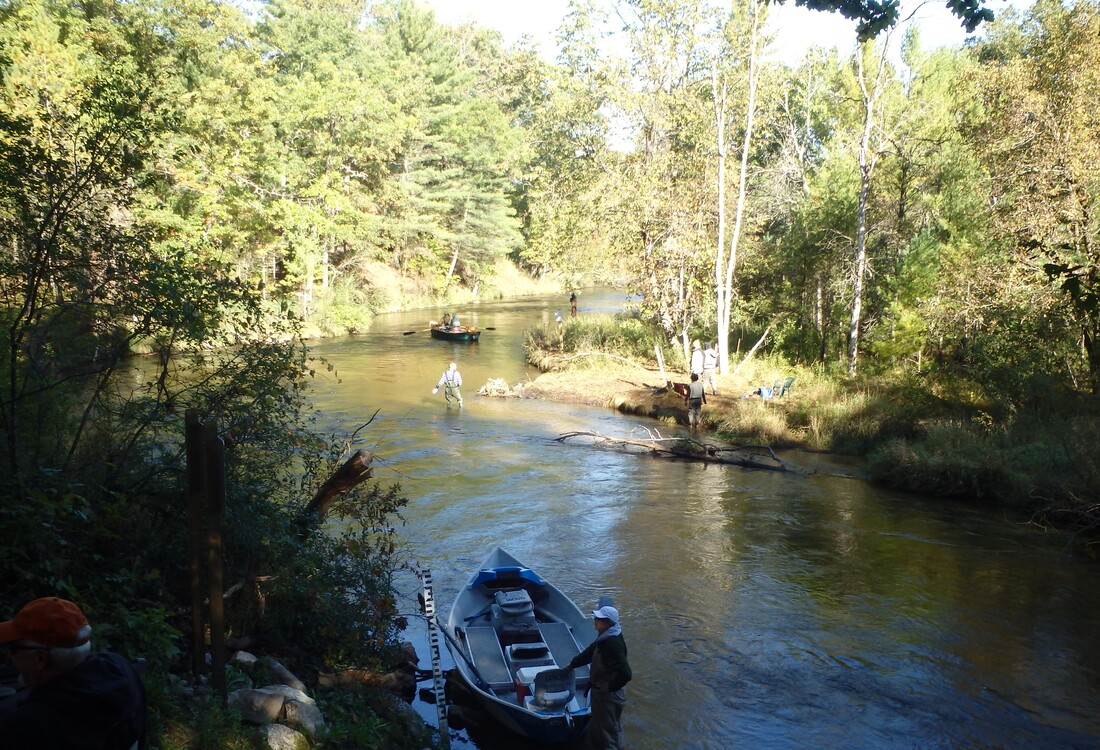
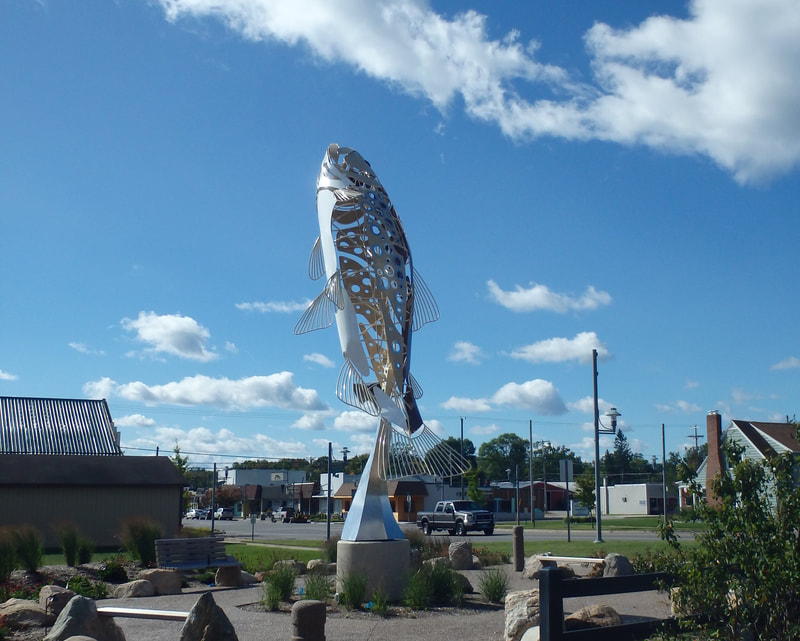
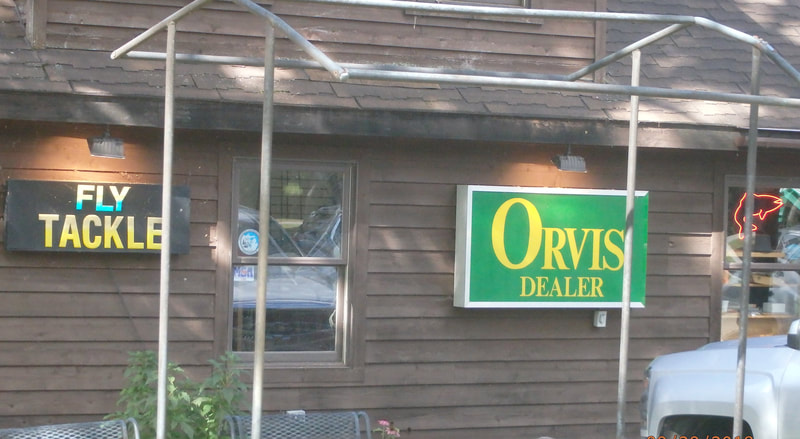
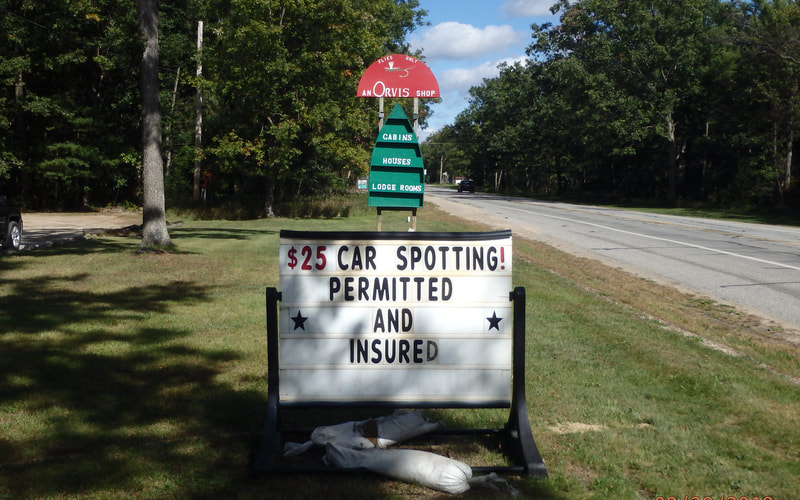
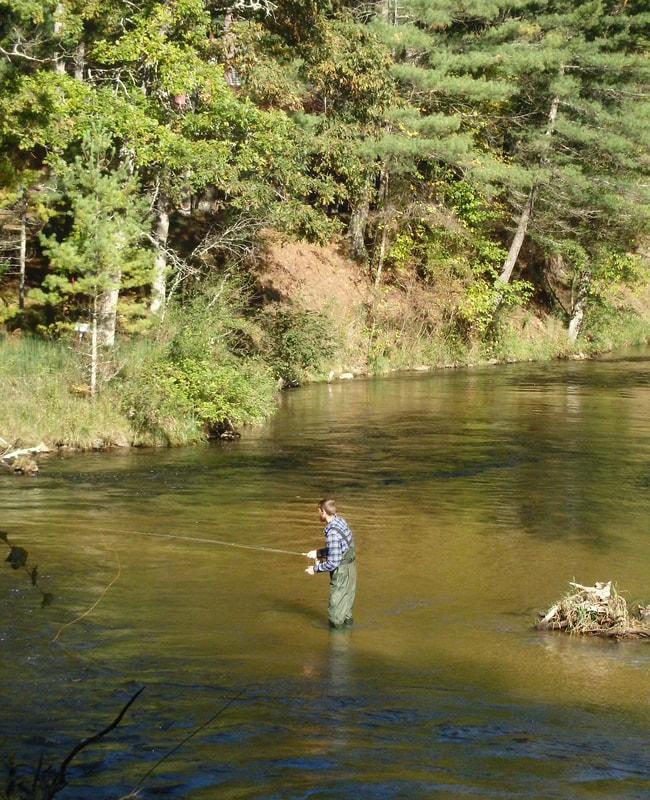
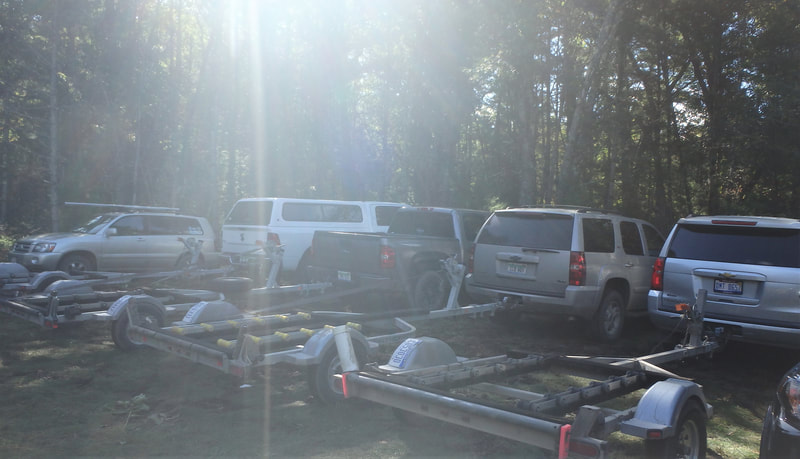
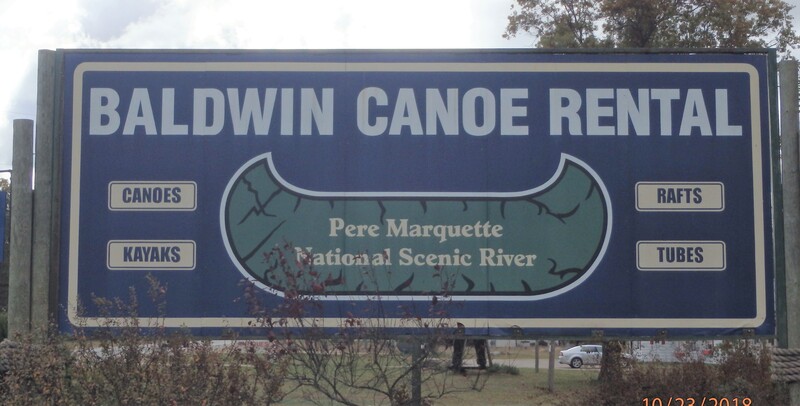
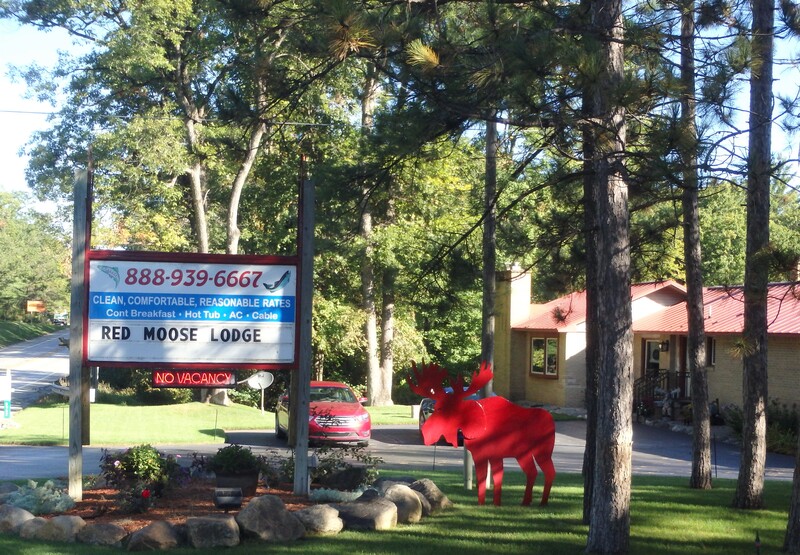
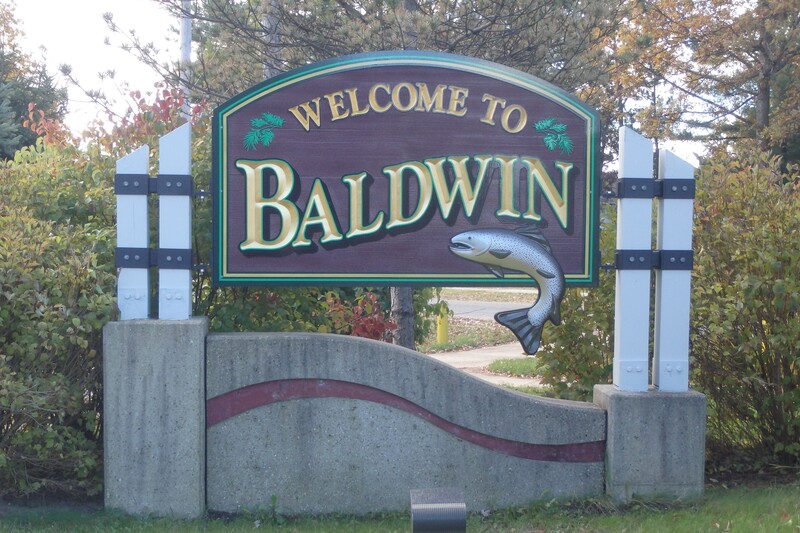
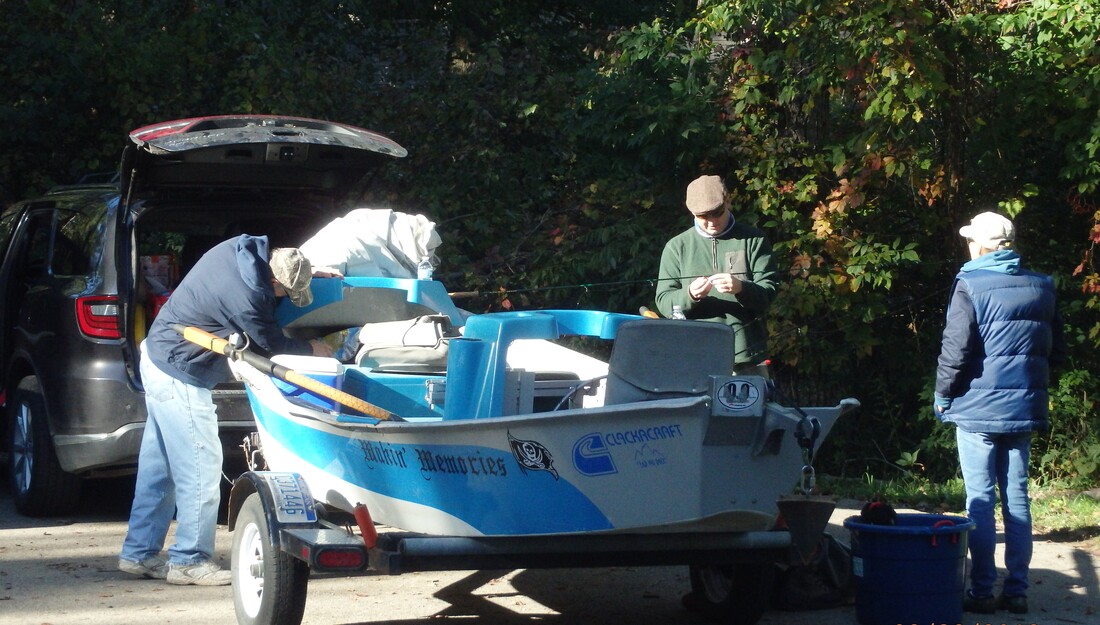
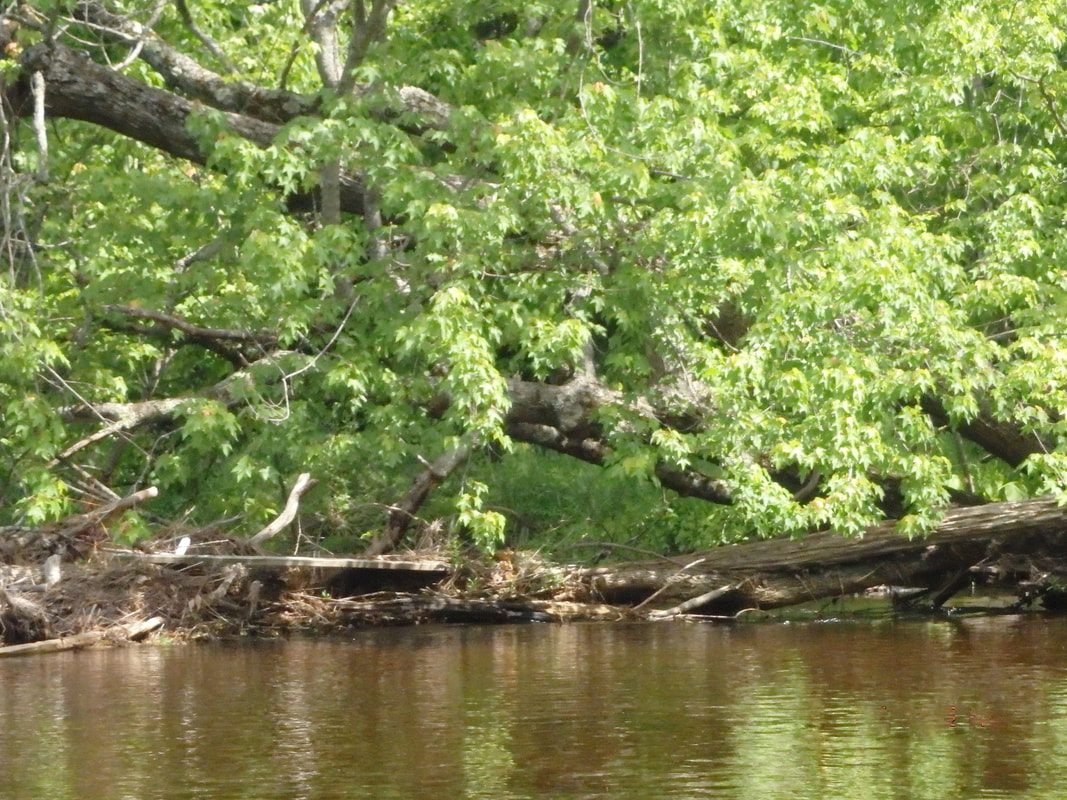

 RSS Feed
RSS Feed